Research
-
Significant data from the research conducted on labour and migration in Bundelkand.
India is the second-largest producer of clay fired bricks globally. Burnt clay bricks are the most commonly used in most parts of the country. Bricks manufactured in rural areas are generally used within a short distance of where they are made (30-40 kms). In contrast, most bricks which are used in urban areas, are manufactured some 100-200 kilometers away. The production of bricks involves a large number of small and informal enterprises, estimated to be somewhere between 250, 000-300,00 brick kilns, employing over 15 million people across the country. Around 65% of brick production in India is attributed to the Gangetic plain of North India, concentrated in the states of Punjab, Harayana, Uttar Pradesh, Bihar and West Bengal. Uttar Pradesh (UP), which is the site of our film, has some of the most fertile land in the country, ideal for making bricks using locally available clay. UP is also the most populous state in India surrounded by populous cities and states like Delhi, Bihar and Rajasthan, where there is a high demand for bricks. According to the UP Pollution Control Board there are 19, 395 brick kilns in the state as of 2023.
System of Employment
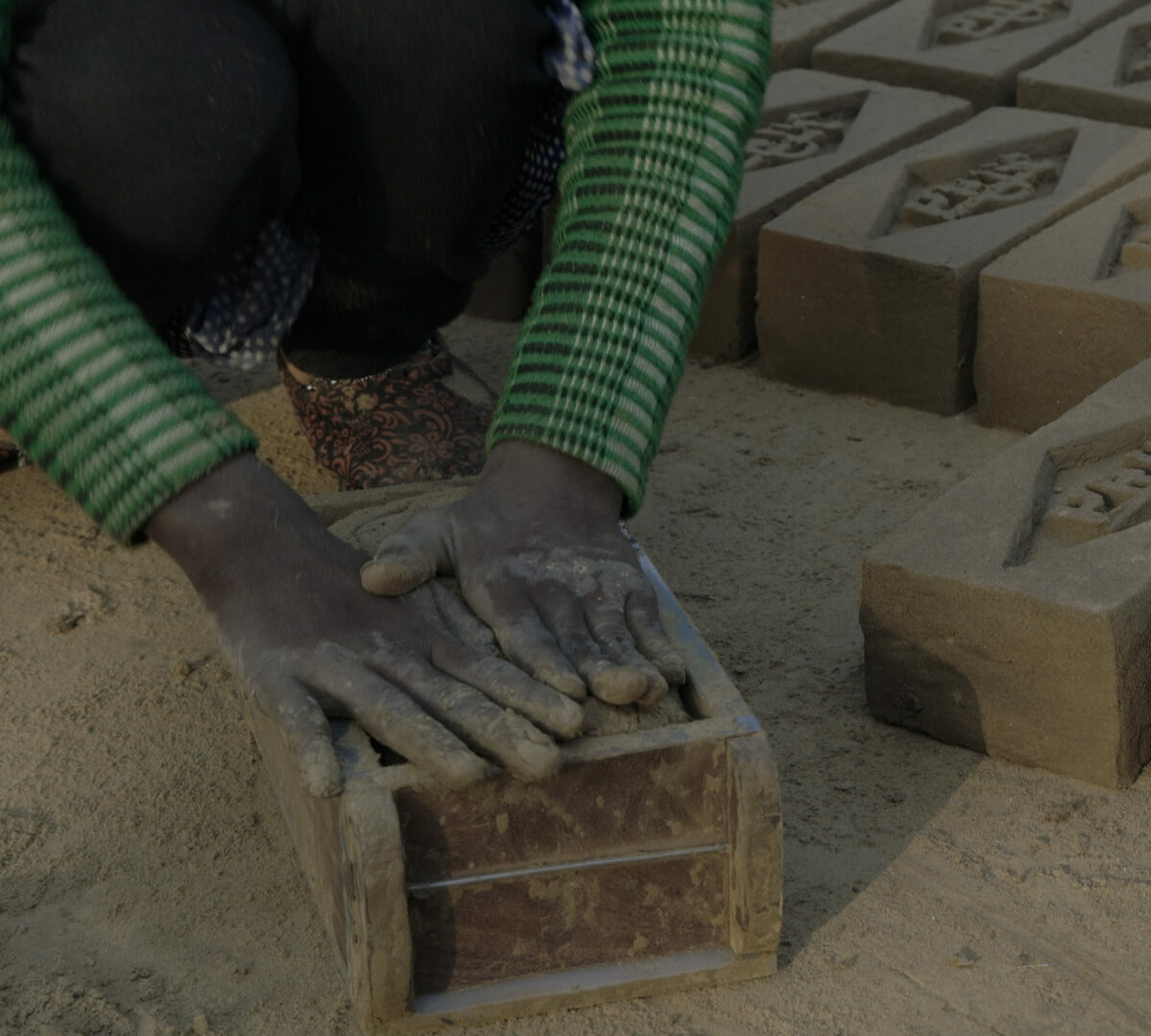
In the brick industry, contractors are hired to bring in labor from distant locations. These workers are not considered employees of the kiln owner and therefore do not fall under the protection of current labor laws, including the Minimum Wages Act. Payment for the workforce is based on the amount of work completed, such as molding 1000 bricks or transporting 1000 green bricks. Due to the seasonal nature of brick production, employment opportunities are limited to a period of six to seven months each year. As a result, the majority of the workforce is forced to seek alternative employment as laborers, often in the agricultural sector, for the remainder of the year.
The Kiln agents pay the laborers an advance wage which make them obligated to work for the kilns for a whole production season. This advance wage served as a substitute for the lacking formal credit system in the rural areas. As a result, the practice of providing advance wages has persisted over the years and has become a recurring process. The repayment of the advance wage is based on piece-rate system of compensation which is calculated per thousand bricks. This system does not account for irregular work timings, variation in the team size and the contribution of invisible workers.
In the brick kiln industry, workers face poor working conditions that are harmful and dangerous. These include long working hours of 8 to 14 hours per day, with only one unpaid rest day every fifteen days. Workers are not entitled to medical benefits or maternity leave, and they are not provided with protective gear. Labour standards related to social, economic, health, and safety are not followed. Workers are not compensated when work is stopped due to rain. The owners provide all tools except for the gas lights needed by the moulders to work at night. Additionally, there is no access to electricity, crèches, separate restrooms or toilets for the workers. In a few cases, the kiln owners provided drinking water, wood for fuel, kerosene for lighting lanterns and emergency lights free of cost. The transportation cost was also paid by the kiln owner.
Caste
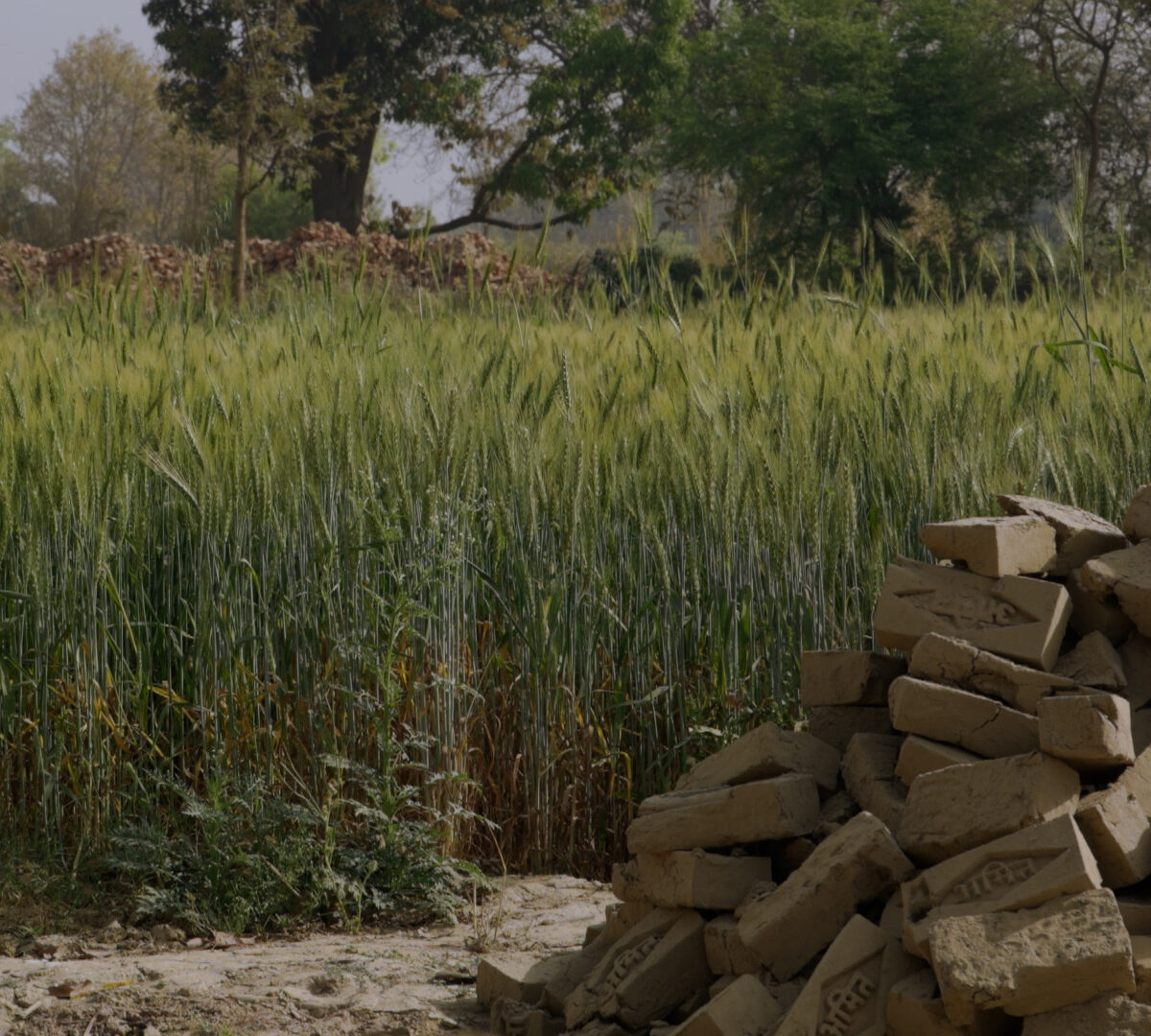
Caste is a descent-based structure of inequality. In India, caste privilege has worked through the control of land, labor, education, media, white-collar professions and political institutions. While power and status are more fluid in the intermediate rungs of the caste hierarchy, Dalits, the group once known as “untouchables” who occupy its lowest rung, have experienced far less social and economic mobility. To this day, they are stigmatized as inferior and polluting, and typically segregated into hazardous, low-status forms of labor. As a result, caste-based discrimination in employment is common in India, and caste networks play a critical role in the recruitment and promotion of individuals in the state of UP.
In India today, nearly half (48.7 percent) of all migrant workers in the Brick Kiln industry are from what the government defines as Scheduled Caste (SC) which means Dalits, while some 16.1% percent are from the the Scheduled Tribes (ST) or Adivasi communities. The remaining 35% are mostly from the Other Backward Classes or (OBC) community, which in the Brick Kiln Sector, represent workers from the lower end of the caste hierarchy.
The brick kiln industry in India is divided into various occupations, with molders or pathers comprising around 80% of the workforce, while other workers belong to different caste groups and have different opportunities for mobility than pathers. Pathers live and work with their families in temporary huts or shanties near the kiln ovens. These workers are predominantly from socially stigmatized Dalit or Scheduled Caste communities in Bihar, Chhattisgarh, and Uttar Pradesh, with Musahars from Bihar being the major caste group.
The recruitment process in the brick industry is organized along caste lines, with cash advances leading to debt bondage. The labor market is segmented based on caste, with each task category having its dedicated caste category. There is also a "rigid compartmentalization of work" based on gender. These workers have no other means of livelihood and no assets at their source village, making it difficult to access government entitlements or buy assets such as livestock. They work in the kilns for eight to nine months a year and often travel long distances with their families, remaining at the bottom of the village economy due to their vulnerabilities.
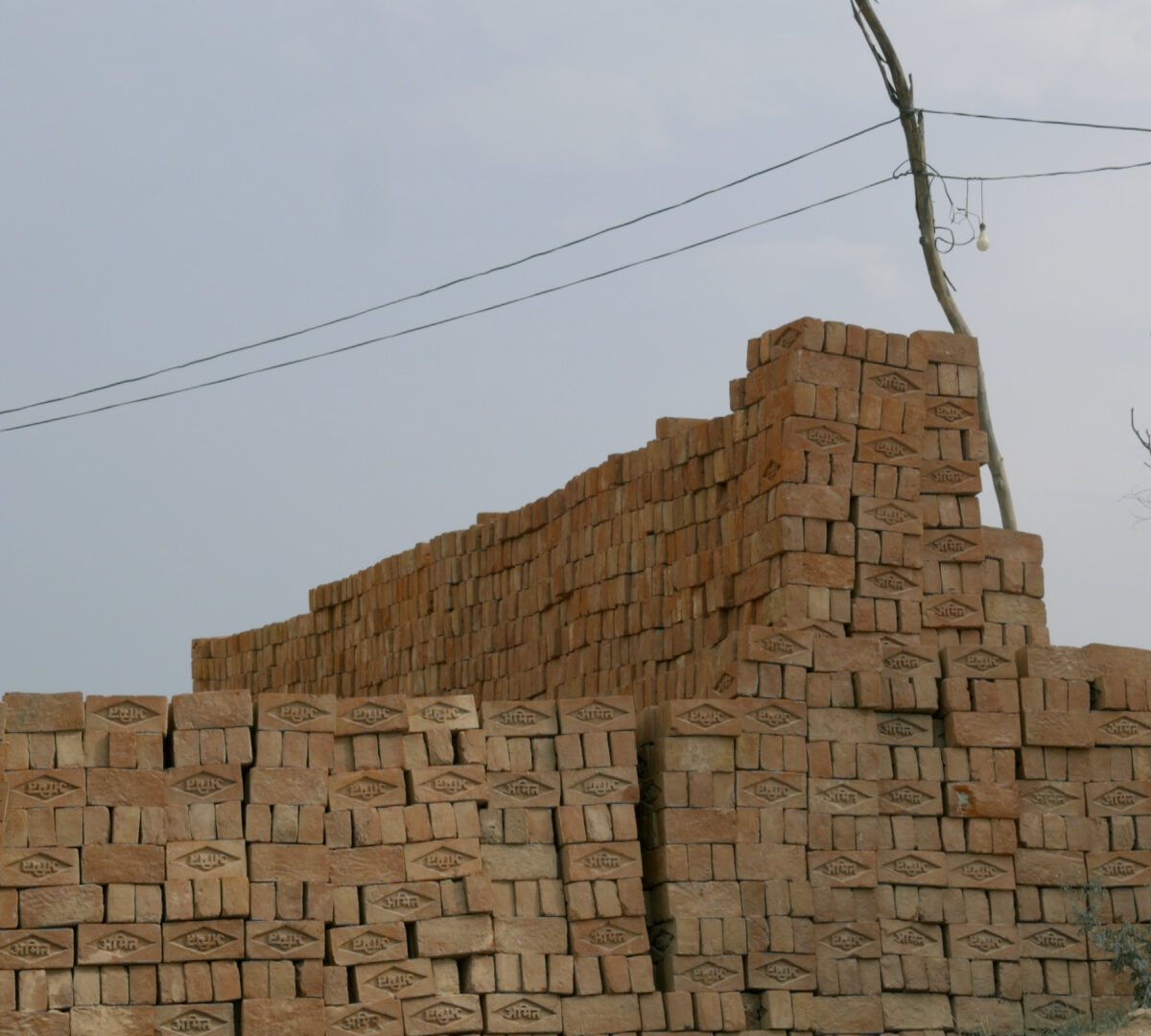
Women in the construction industry
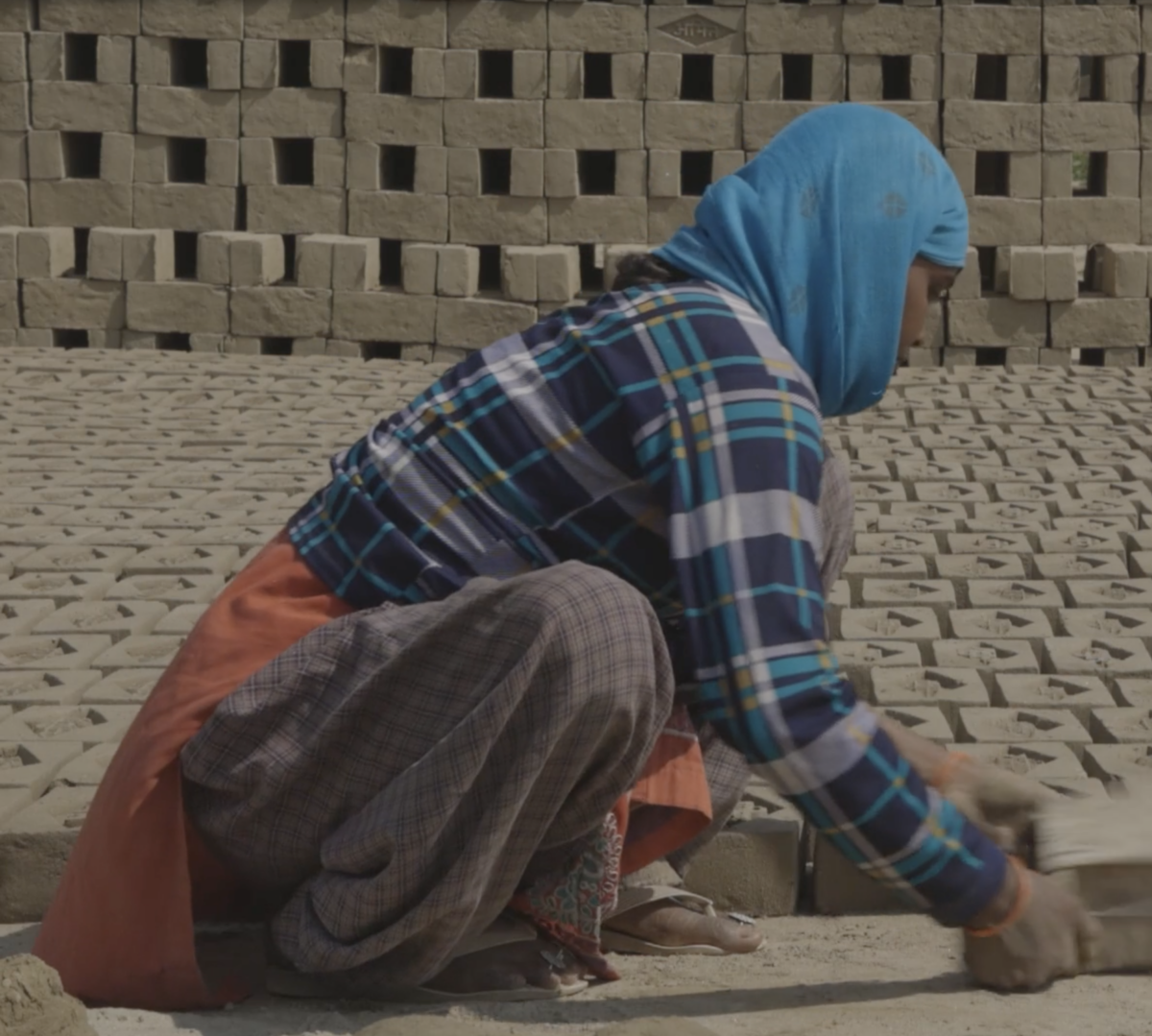
The stigmatization of women's work encompasses various societal and interpersonal mechanisms that consistently undervalue specific types of work performed by women. This includes tasks such as domestic work, brick kiln labor, construction work, entertainment industry jobs, and sex work. The stigma associated with these occupations is deeply rooted in patriarchal norms within families and communities. It operates as a means of social control, particularly affecting women who migrate for employment opportunities. This system of social control creates a parallel structure of policing, distinct from the formal state apparatus. Family, community, and state forces collude to marginalize and victimize women involved in certain types of work, or simply make these stigmatized occupations invisible in society.
Chamar (Dalit) men faced challenges in finding suitable marriage prospects due to their involvement in seasonal labor migration to brick kilns. Approximately 60 percent of Chamar households, including women and children, migrated to brick kilns located in different parts of the district, as well as Punjab and Haryana, for a period of six to eight months each year. During the remaining four to six months, both men and women worked as casual laborers for Jat farmers. It has been observed that Chamar women typically began working in the brick kilns immediately after getting married, while women from other communities engaged in paid work at a later stage in their married lives, as their mobility increased.
Due to the pressures of poverty and caste dynamics, brides from different regions, both nearby and far away, who married Chamar brick-kiln workers also joined their husbands in working at the brick kilns from the very first year of their marriage.
The number of female migrants working in brick-kilns is much higher than male migrants, and this trend has remained constant. According to NSS 2007-08, 77.6% of female migrants in the sector moved due to marriage. It is common to see groups of women carrying heavy loads of bricks weighing up to 90 pounds on their heads at construction sites in India. However, opportunities for women in India to acquire skills in higher-paying trades such as carpentry, masonry, plumbing, and electrician training, which are typically male-dominated, are rare.
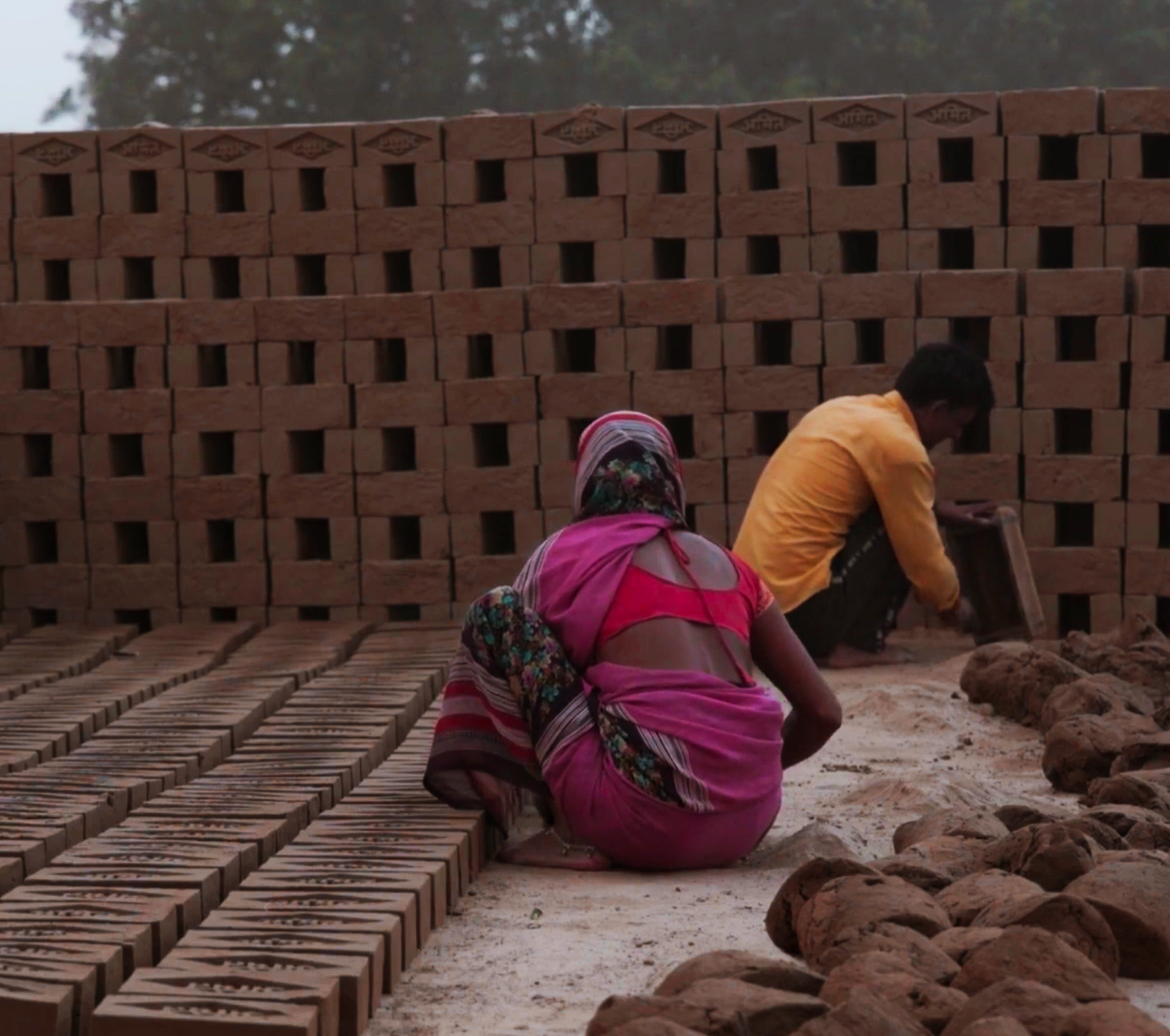
Bibliography
- Roadmap for Promoting Resource Ecient Bricks in India: A 2032 strategy, https://shaktifoundation.in/wp-content/uploads/2018/04/Roadmap-for-promoting-Resource-Efficient-Bricks-in-India-Summary-report.pdf
- https://www.ccacoalition.org/sites/default/files/resources/Fact%20sheet%20brick%20sector%20India.pdf
- https://www.sciencedirect.com/science/article/abs/pii/S0197397504000396
- http://www.ecobrick.in/challenges_Issues_in_the_Indian_Brick_Sector.aspx
- Centre for Education and Communication (CEC), https://www.cec-india.org/libpdf/1547116021LabourMarketDynamics&IndustrialRelationsinBrickKilnIndustry.pdf
- https://www.nytimes.com/2021/05/25/opinion/caste-discrimination-us-federal-protection.html
- https://mohua.gov.in/upload/uploadfiles/files/1566.pdf
- The Making of Urban Peripheries and Peripheral Labor: Brick Kilns and Circular Migration in and beyond Greater Delhi https://journals.openedition.org/samaj/7276
- Labour Market Dynamics & Industrial Relations in Brick Kiln Industry https://www.cec-india.org/libpdf/1547116021LabourMarketDynamics&IndustrialRelationsinBrickKilnIndustry.pdf
- Gendered Technologies of Power: Experiencing and unmaking borderscapes in South Asiahttps://www.researchgate.net/publication/324276850_Gendered_Technologies_of_Power_Experiencing_and_unmaking_borderscapes_in_South_Asia
- Inequalities, Intimacy, and Women's Lives in Rural North India, Part 1, Contextualizing Marriage in Rural North Indi”.https://ebookcentral-proquest-com.myaccess.library.utoronto.ca/lib/utoronto/detail.action?docID=6728167
- Gender and Globalization Opportunities and Constraints Faced by Women in the Construction Industry in India https://journals.sagepub.com/doi/pdf/10.1177/0160449X08326187